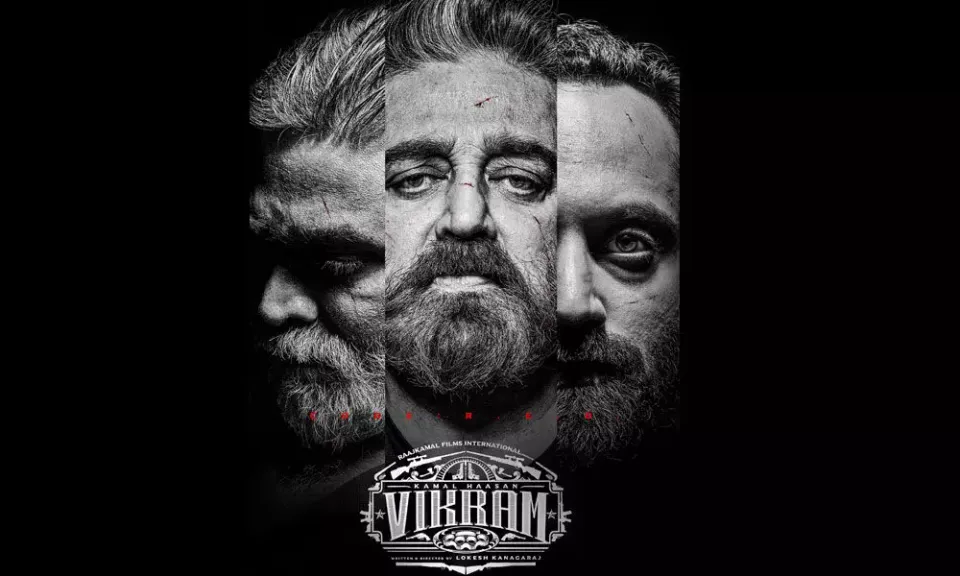Vikram And Hitchcock - The Dolly Zoom Effect

I have been planning to publish this article for quite sometime but I feel now is the right time to do so given that the film will be out in another 3 weeks at the theaters. The new audio release by Anirudh also adds up to the hype amidst the controversy that it has created. Yes, of course I am talking about the film "Vikram" starring Kamal Haasan, Vijay Sethupathi and Fahadh Faasil and the many other talented artists directed by Lokesh Kanagaraj.
But this article is not about what I am expecting from the film or Kamal Haasan or the controversy behind Pathala Pathala. This article is about a specific scene in the trailer that I found very interesting.
Being a big time Kamal fan (in cinema), I couldn't stop myself from watching the trailer more than once. It was during the third or fourth time of watching I noticed something different from 1:50 - 1:57. Although this is where the famous "Aarambiklangla" dialogue is rolled, I happened to see something beyond Kamal.

You could also say I saw something "behind" Kamal as well. If you carefully look at this shot, you'll be able to notice how the camera moves in a weird manner. At first it looks like the camera is zooming out with respect to the background and then looks like its zooming in with respect to the object (i.e., Kamal).
It was a little confusing at first although I knew it wasn't something novel that I am experiencing. This gave me a slight déjà vu to a film scene I am trying to recollect but ultimately failed to do so. Only after a little bit of research I found this scene resembles a shot from the film "Jaws" directed by the legendary Steven Spielberg. You can find the scene I am talking about here.
This is a very intriguing camera technique that was first used by Alfred Hitchcock, one of the greatest film directors of all time, in his film "Vertigo". Hitchcock used this technique to show the depth of a staircase and emote dizziness in Vertigo. Ever since then, a lot of film directors have adopted this technique which was later called as the "Vertigo Effect" or "Dolly Zoom".
The Science Behind Dolly Zoom
Technically, Dolly Zoom is a pretty cool optical illusion which you can capture by moving your steady camera in forward motion while zooming out or vice versa. When you zoom in or out and motion in the opposite direction of your camera lens, you'll be able to notice the foreground being stiff whereas the background would either stretch or squeeze depending upon what type of direction you're moving. The idea revolves around the camera lens and how we use it.
The two most used and often confused type of film lenses are Telephoto and Wide Angle lenses. Both of them are unique in their own ways. Wide Angle lens is used by photographers and film makers to expand the horizontal scope of a camera shot as they have a short focal length in comparison to a normal lens. This is typically used to capture landscapes like farms, mountains etc. A Telephoto lens however, has a relatively longer focal length compared to a normal lens and is used to take close up shots. Most of the wildlife photographers use this type of lens to capture animals, birds and insects.

Let's assume that you're using a Telephoto lens to capture an object. Ideally, you'll be focusing more on the object and the background will be smaller. Now, when you change the focal length by zooming out while also getting closer to the object by pushing camera forward, you'll be able to get more background while keeping the foreground in it's original state. In the end it would seem like you started shooting with a Telephoto Lens and then somehow shifted to Wide Angle Lens during the process. This transition from one type of lens to another can be used to capture a variety of emotions and feelings such as dizziness, reminiscence, paranoia etc.
Martin Scorsese used Dolly Zoom in Goodfellas. In the scene where Henry and Jimmy have a conversation at the diner, he uses Dolly Zoom to let us audience know that Henry is facing the consequences of being a megalomaniac.
Dolly Zoom is also used in animation films such as Ratatouille.

Although I cannot seem to figure out why Lokesh has used this effect, I am pretty sure whatever comes after that shot is going to be something else.
Enjoyed the read ?
Subscribe to my free newsletter and get interesting articles like this delivered straight to your mailbox.
